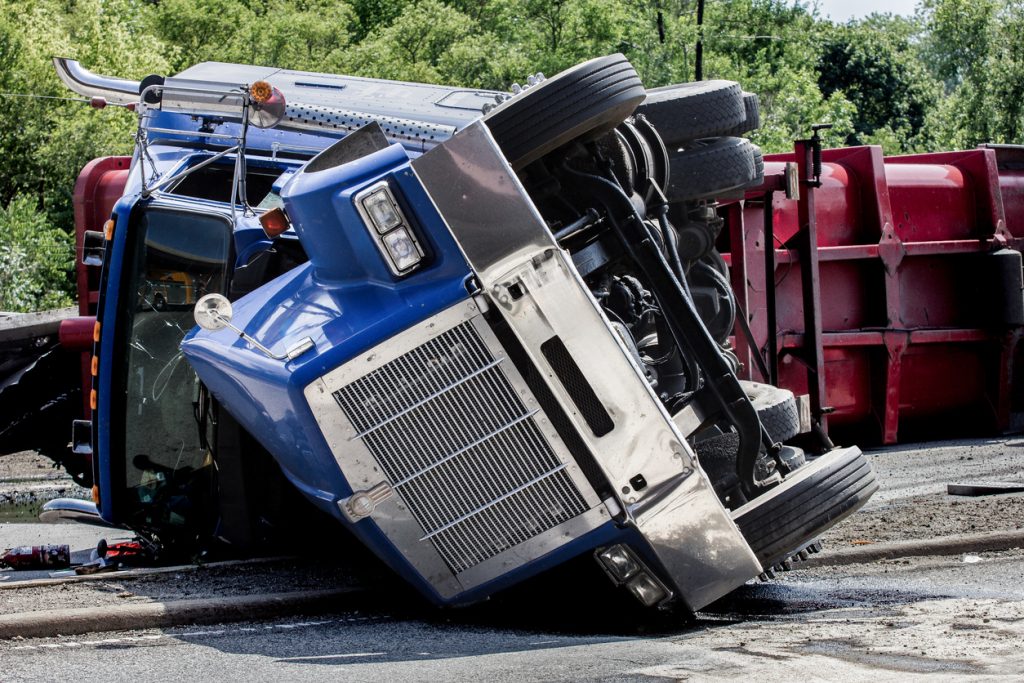The truck accident injuries sustained in collisions involving large commercial vehicles are often devastating. Unlike typical car accidents, truck crashes generate a far greater impact due to the weight, size, and speed of the trucks involved. For injured victims, this often translates into more severe medical conditions, longer recovery periods, and complicated legal processes for claiming damages. Understanding the types of injuries most commonly suffered and how compensation works is essential for anyone navigating life after a trucking accident.
The Reality of Truck Crash Injuries
Due to the sheer mass of commercial trucks—many of which weigh up to 80,000 pounds—injuries resulting from such accidents are rarely minor. Victims are often left with life-altering trauma, ranging from physical to emotional and financial. Most collisions involve multiple parties, including truck drivers, employers, insurance carriers, and sometimes even government entities, making the compensation process more complex than in standard auto accidents. Recognizing the most frequent injuries is the first step toward securing compensation.
Traumatic Brain Injuries from Truck Accidents
Among the most catastrophic outcomes of truck crashes are traumatic brain injuries (TBIs). These injuries may result from blunt-force trauma when the victim’s head strikes a surface inside the vehicle or from violent shaking during the crash. TBIs vary in severity—from mild concussions to permanent brain damage—but all can have lasting consequences on cognitive function, emotional regulation, and motor skills. Often, long-term treatment is required, and the cost can be overwhelming. For this reason, securing adequate compensation becomes crucial.
Victims who experience TBIs often must undergo extensive neurological exams, imaging tests, and cognitive therapy. If the injury prevents them from returning to work or requires ongoing care, the settlement must reflect these economic damages. The value of compensation also factors in non-economic aspects such as pain and suffering, emotional distress, and diminished quality of life.

Spinal Cord Injuries and Paralysis
When a commercial truck collides with a smaller vehicle, the impact can cause sudden and forceful movements that damage the spinal cord. These injuries can lead to partial or complete paralysis, affecting the victim’s ability to perform daily activities or maintain employment. Paraplegia and quadriplegia are common outcomes in severe collisions, especially in rollover or underride crashes.
Recovering compensation for spinal injuries involves accounting for lifetime care, the need for assistive devices, modifications to homes or vehicles, and the inability to earn a living wage. Documenting the full extent of the physical limitations is essential in such claims, particularly when filing with insurance carriers who often attempt to reduce settlement payouts. When handled correctly, a claim for truck accident injuries involving spinal trauma can result in a significant financial recovery that supports long-term health needs.
Fractures and Broken Bones in Commercial Truck Crashes
Bone fractures are a routine consequence of truck collisions. These injuries are not only painful but also medically complex, often requiring surgeries, implants, or rehabilitation therapy. Commonly affected areas include the ribs, arms, legs, hips, and facial bones. In more serious cases, victims may experience compound fractures that puncture the skin and increase the risk of infection.
The healing process for broken bones may take weeks or months and can prevent individuals from returning to work or participating in their usual daily routines. In cases of permanent damage or disfigurement, compensation can cover both current and future losses. Evidence such as medical reports, surgical records, and physical therapy notes becomes a critical part of the injury claim.
Internal Injuries That Go Unnoticed
Internal bleeding and organ damage are silent but potentially fatal consequences of truck accidents. The force of impact can rupture internal organs such as the liver, spleen, kidneys, or lungs. Unlike external injuries, internal trauma may not present symptoms immediately. This is why emergency medical evaluations are vital after any truck crash—even when there are no visible injuries.
Delayed treatment for internal injuries can worsen outcomes and lead to wrongful death in some cases. When pursuing a claim for such common truck accident injuries, comprehensive diagnostic records, including CT scans and surgical reports, are indispensable. These documents help establish the medical link between the crash and the internal damage sustained.
Whiplash and Neck Strain Following Impact
Neck strain and whiplash are common in both low-speed and high-speed truck collisions. The sudden jolt of a rear-end crash or a side-impact hit can cause the neck to snap violently, leading to soft tissue damage. While some consider whiplash to be a minor injury, it can actually lead to chronic pain, stiffness, and limited range of motion.
Many victims face skepticism from insurance adjusters who downplay these injuries due to their invisible nature. However, detailed medical records, chiropractor assessments, and physical therapy documentation can reinforce the legitimacy of the claim. The pain and limited function caused by these injuries may entitle the victim to both economic and non-economic compensation.
Burns from Truck Accidents Involving Hazardous Materials
When trucks are transporting flammable or hazardous materials, accidents can result in explosions or fires, causing serious burn injuries. These burns may range from first-degree to third-degree and may require multiple surgeries, skin grafts, and long-term rehabilitation.
The cost of treatment is immense, especially for severe cases involving facial burns or deep tissue damage. Victims may also suffer psychological trauma from the disfigurement, which makes emotional damages a significant component of a compensation claim. Insurance companies and at-fault parties can be held liable for extensive recovery costs when the injuries are properly documented and supported by medical evidence.

Amputations Caused by Severe Truck Collisions
Some of the most tragic outcomes of truck accident injuries involve limb loss or amputation. These may occur during the crash itself or become necessary later due to crush injuries, infection, or irreparable tissue damage. The physical and emotional toll of amputation is immense. Victims must adjust to prosthetics, relearn basic functions, and confront a permanent change in lifestyle.
Claims involving amputations generally include damages for medical bills, prosthetic costs, rehabilitation, future loss of income, and pain and suffering. Courts and insurance carriers often recognize these as high-value claims due to the permanent disability involved. Ensuring that vocational experts and medical professionals support the claim can help maximize the recovery amount.
Post-Traumatic Stress Disorder After a Truck Crash
While physical trauma is often addressed first, the emotional scars from a truck collision can linger far longer. Victims of serious crashes may develop post-traumatic stress disorder (PTSD), which affects their ability to drive, work, or maintain relationships. Symptoms include nightmares, anxiety, depression, and emotional numbness.
The psychological impact of an accident is a legitimate basis for compensation. Mental health evaluations, therapy records, and prescriptions serve as supporting documentation. Claims for PTSD require clear evidence linking the emotional distress to the accident, but when handled properly, they can result in compensation for pain and suffering in addition to any physical injury-related damages.
Soft Tissue Injuries That Limit Mobility
In addition to whiplash, truck accidents commonly lead to other soft tissue injuries such as sprains, strains, and bruising. While these may not appear serious at first glance, they can severely impact mobility and function. These injuries can take weeks or even months to fully heal, and in some cases, they may evolve into chronic conditions requiring long-term care.
Securing compensation for soft tissue damage may require imaging such as MRIs and consistent treatment documentation. Because these injuries are not always visible on X-rays, insurance adjusters frequently challenge their legitimacy. Persistence and well-organized documentation can help overcome these hurdles.
Injuries from Being Thrown from the Vehicle
In violent collisions, passengers may be ejected from their vehicles. This can result in a combination of catastrophic injuries including skull fractures, internal bleeding, spinal cord trauma, and road rash. Ejection injuries are most common in accidents involving rollovers, jackknife events, or underride scenarios.
Claims involving ejection often involve higher compensation due to the extensive nature of injuries and the likelihood of permanent disability. These claims can benefit from accident reconstruction reports, eyewitness testimony, and forensic medical evaluations to determine the full extent of the trauma.
How to File a Compensation Claim After a Truck Crash
To initiate a compensation claim after suffering injuries in a truck accident, the victim must gather medical records, police reports, photographs, witness statements, and documentation of all related expenses. Filing a personal injury claim typically involves identifying all liable parties—often including the driver, trucking company, and potentially the manufacturer of defective parts.
Navigating the legal landscape for truck accident injuries is complex, particularly when multiple parties and commercial insurance policies are involved. Victims are encouraged to act swiftly, as evidence can degrade, and filing deadlines (statutes of limitation) vary by jurisdiction. Compensation typically covers medical expenses, lost income, future earning potential, rehabilitation costs, and non-economic damages such as emotional distress.
As outlined in this article on the most common truck accident injuries, identifying the nature of injuries sustained and their long-term consequences plays a vital role in the success of a personal injury claim. This resource further explains how various injuries affect claims and the type of compensation that may be recovered.
In serious cases, the involvement of government agencies becomes necessary. For example, the Federal Motor Carrier Safety Administration (FMCSA) outlines safety protocols and regulations aimed at preventing these accidents. When regulations are violated, injured parties may cite these standards to support their claims. More on this can be found at FMCSA.gov, which provides authoritative legal resources and guidelines relevant to trucking accident litigation.
Final Thoughts on Navigating Compensation for Common Injuries
Understanding the spectrum of truck accident injuries and the compensation process is essential for anyone affected by a trucking collision. Whether dealing with brain trauma, broken bones, or psychological damage, each injury presents its own set of medical, legal, and financial challenges. Properly documenting injuries, maintaining medical records, and acting promptly can significantly improve the chances of a successful compensation claim.
By knowing what to expect and where to turn, victims can transform a traumatic experience into a path toward recovery and justice.
